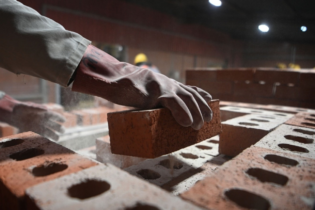Architect business confidence rose to 55 index points during the quarter. However, the confidence of quantity surveyors dropped 3 index points to 55.
Loos said that activity at the start of the building pipeline remains reasonably robust and that it was therefore understandable that the confidence of architects and quantity surveyors is above 50. “However, this may not necessarily translate into actual building work going forward,” he added. The business confidence of hardware retailers regained 8 points to register a level of 37. According to Loos, confidence was higher despite a sharp slowdown in sales and profitability during the quarter, reflecting the broader weakness in consumer spending. Sub-contractor confidence fell 1 index point to a level of 42. Loos said the fortunes of the two sub-sectors, residential and non-residential, follow the pattern seen in the main contractor segment for much of the past few quarters. “That is to say, the residential market is outperforming the non-residential market,” he added. For much of 2016 the survey suggested that the residential sector experienced moderate growth while the non-residential sector contracted. According to the report, this quarter, the results point to a deterioration in the fortunes of residential contractors and a deepening in the woes of non-residential building activity. Overall, after posting mild growth last quarter, output in the total building sector contracted. In contrast, the continued activity at the start of the building pipeline, especially of architects, is cause for optimism, the report said. However, whether or not this translates into higher building activity in subsequent quarters depends on what happens on the broader economic and political front, it added.
Building confidence rose by three points to 43 despite weaker economic activity in the first quarter of 2017. This is according to the Bureau for Economic Research’s (BER) Building Confidence Index.
“This marks the highest confidence in more than a year,” the report read. However, while confidence has improved, the current level of the index indicates that the majority (close to 60%) of respondents are dissatisfied with prevailing business conditions.
The confidence of main contractors recorded a level of 42 index points in the first quarter of 2017, 6 points lower than in the last quarter of 2016.
The report suggests that the drop in overall confidence was largely due to lower confidence among residential contractors while non-residential contractor confidence was largely unchanged.
According to the survey, the fall in residential contractor confidence was on the back of weaker building activity and keener tendering price competition.
John Loos, property economist at First National Bank, said: “For the past few quarters the trend in the residential building sector has been broadly up in terms of activity, while that of the non-residential contractors has deteriorated. This quarter, it seems that the residential contractor segment is also under pressure.”
The index revealed that building material manufacturer confidence registered the biggest jump, from 10 to 25 index points in the first quarter of 2017.
Loos said: “Domestic and exports sales fared well during the quarter and the jump in confidence is supported. However, looking at the rest of the building sector, it is difficult to pinpoint where these goods are being used.”









